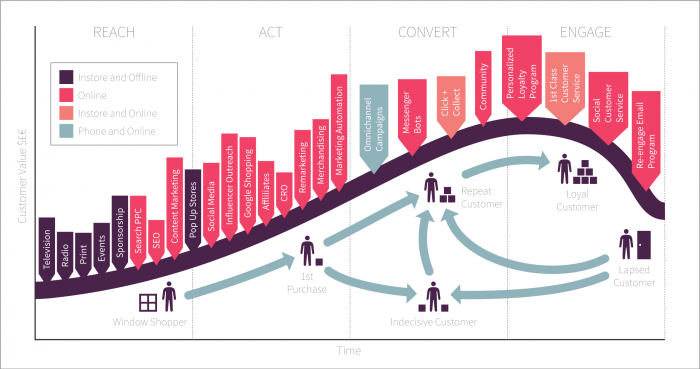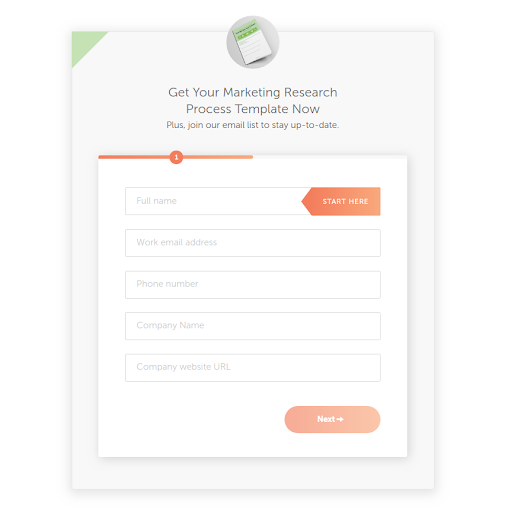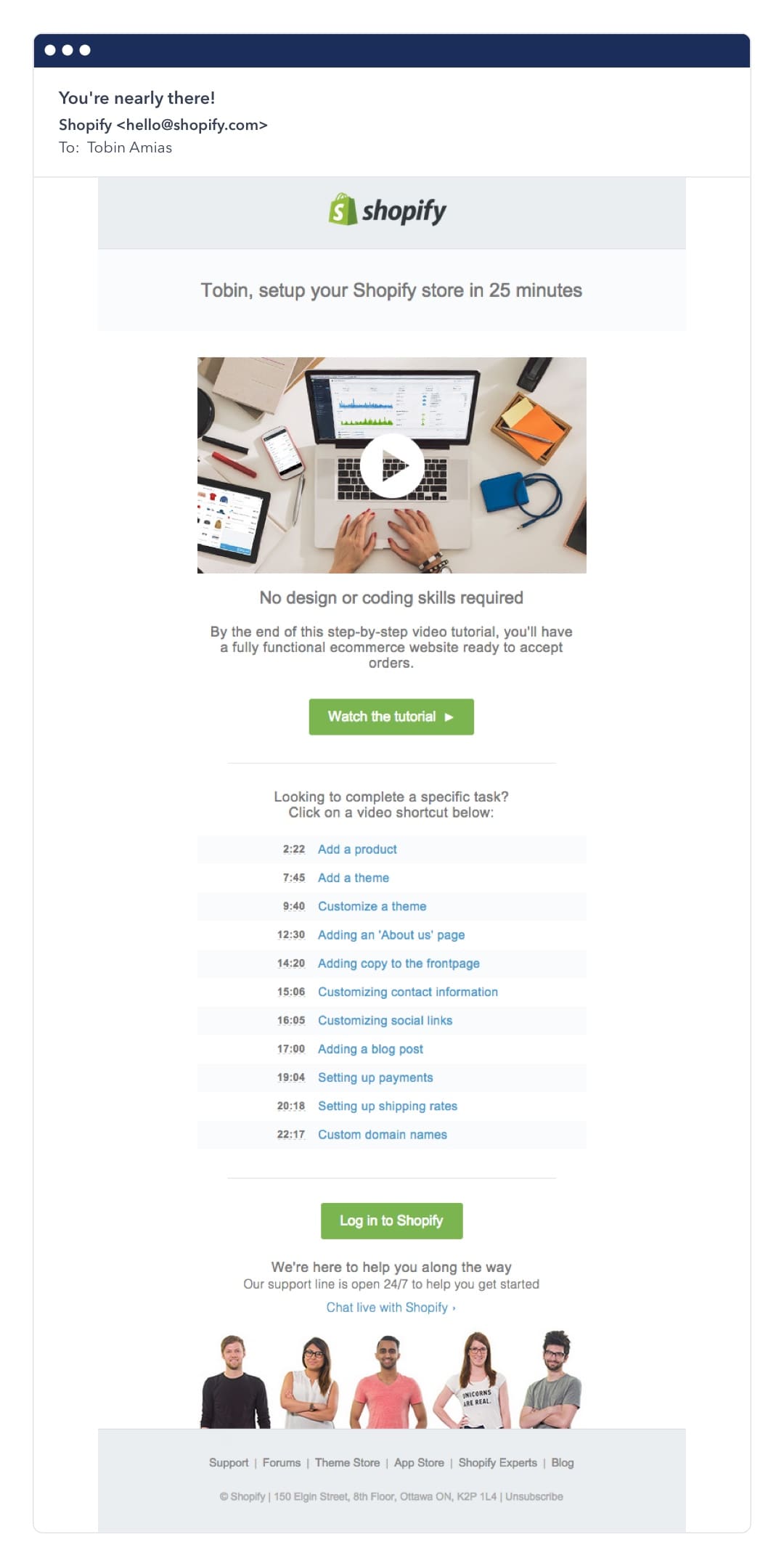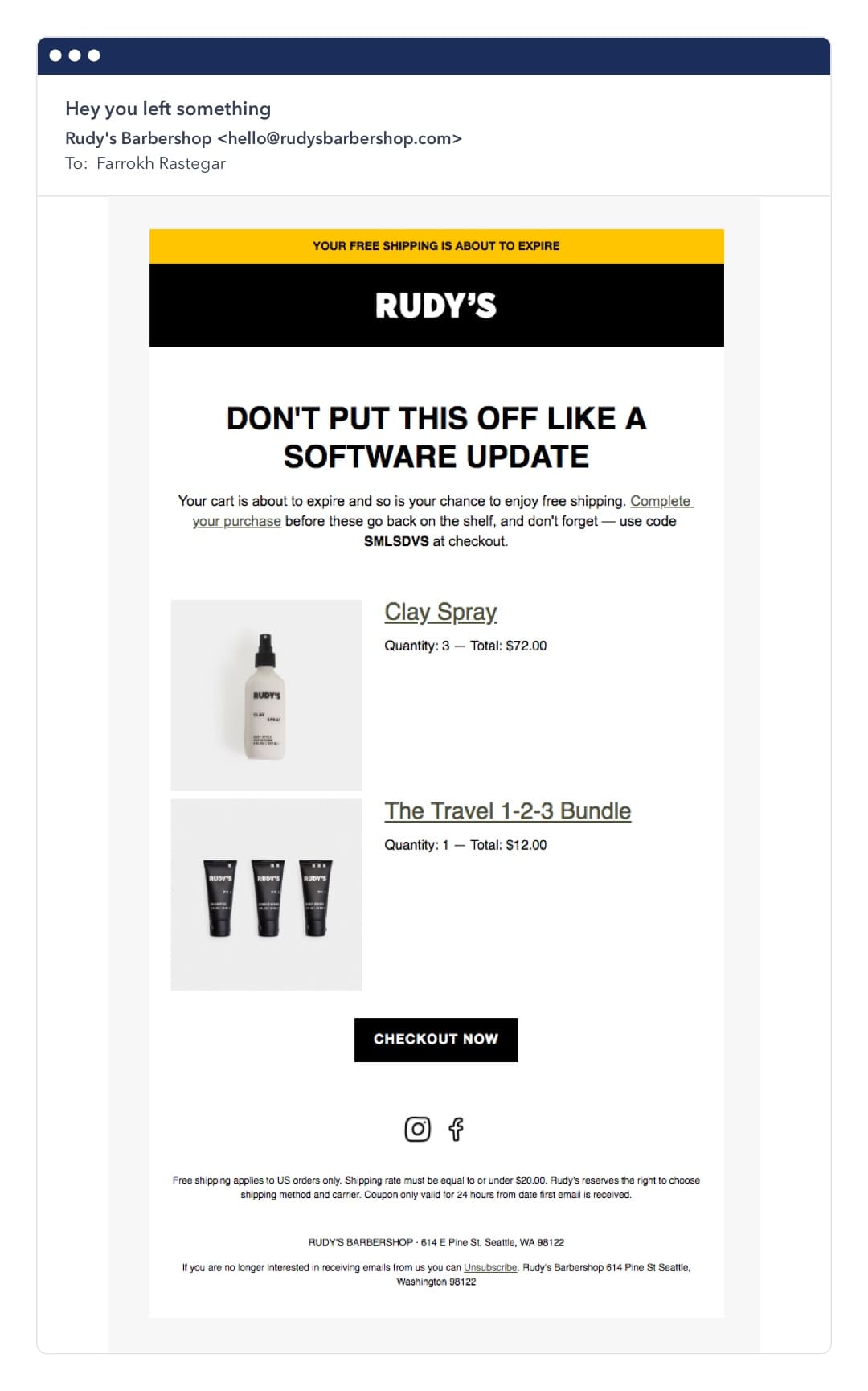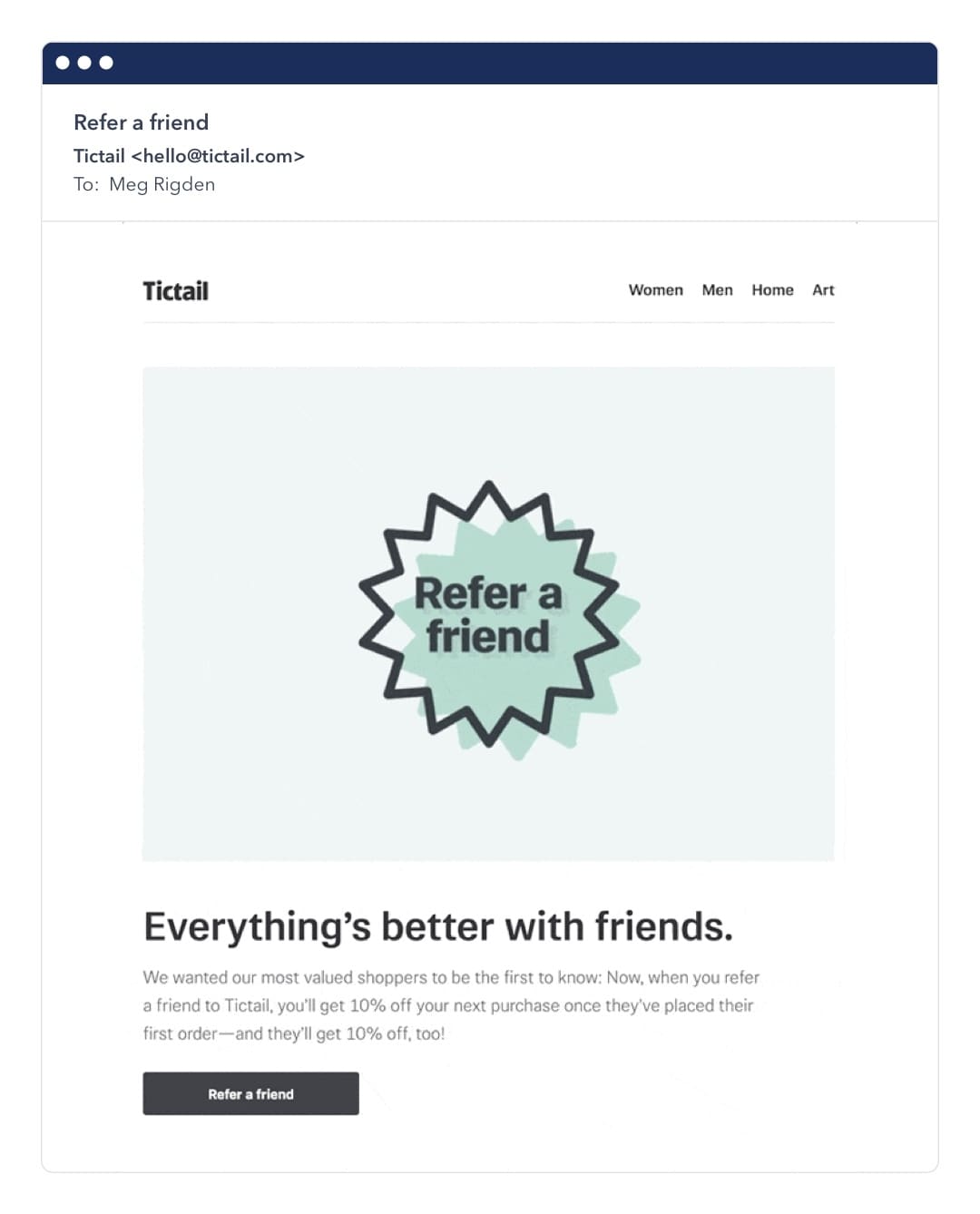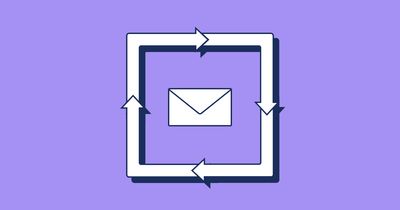
Lifecycle marketing: How to map it to your email campaigns
-
Messaging and AutomationUpdatedPosted:
On this page
Think about your favorite brands. Whether it’s Nike, Apple, Disney, or Google, they all have something in common. They’ve built really strong relationships with their customers.
These companies aren’t just great at acquiring customers, they also invest heavily in nurturing sustainable relationships.
It’s why we feel safe storing important data on Google platforms, or why there are always millions of people waiting to buy new iPhones. And it’s also why Disney has defined family entertainment for decades.
There’s a term for what these companies are doing to foster stronger relationships with their customers – it’s called lifecycle marketing.
What is lifecycle marketing?
Lifecycle marketing encompasses all the activities a brand goes through to guide customers from the point of discovery: when they first hear about the brand, to purchase, and later to advocacy.
It’s everything a company does to build a strong relationship with a customer as they move through the buyer’s journey.
This diagram from Smart Insights shows the marketing tactics a brand might use across the customer lifecycle:
The goal of customer lifecycle marketing is to acquire new customers, lead them through to their first purchase, and to turn them into loyal buyers.
A typical customer lifecycle is comprised of different stages, which varies depending on brand – although the concept remains the same.
For subscription-based businesses, the customer lifecycle could be categorized into the following stages:
- Awareness
- Engagement
- Purchase
- Retention
- Growth
- Advocacy
It’s worth keeping in mind that customers don’t always follow this typical path. Every customer is different, and the journey they take in the lifecycle will differ.
The different stages are just there to help you visualize the beaten path most customers take from awareness to advocacy.
As marketers, we often focus disproportionately on customer acquisition over everything else.
Thinking about the customer lifecycle forces us to see past just acquisition and into how we can use marketing initiatives to boost customer retention, as well as lifetime value.
This is especially important when you consider that increasing customer retention rates by 5% boosts profits by 25% to 95%, but acquiring a new customer is anywhere from 5 to 25 times more expensive than retaining an existing one.
When it comes to lifecycle marketing there’s one channel that can be truly transformative to your campaigns
Mapping lifecycle marketing to email
Email marketing has the highest ROI of any marketing channel, and it allows you to create extremely personalized and relevant experiences at scale.
Here’s how to map lifecycle marketing to email:
1. Awareness:
This is when a customer realizes they have a problem and starts looking for a solution. During the course of their research, they stumble upon your brand and this kicks off the relationship.
While email marketing can’t be used at the awareness stage, it’s here that you can lay the groundwork for everything else in the customer lifecycle.
People rarely buy on their first interaction with a brand, so email marketing gives you the opportunity to continue the conversation at a later date.
To build the relationship until they’re ready to buy.
So the first step to powering lifecycle marketing with email is turning your problem-aware visitors into email subscribers.
Here are two ways you can grow your email list:
1. Create targeted content, then collect email address with opt-in forms
You can see examples of this from the CoSchedule blog like this one:
2. Giveaway products your target audience wants
Here’s an example of a giveaway done by Noah Kagan of Okdork, where he used Seth Godin books to grow his email list:
2. Engagement
At this stage of the lifecycle, a prospect is interested in making a purchase. They know what you have to offer, but still need more information before they can buy.
For instance, an engaged customer might know that they want to launch an ecommerce store, but might want to do a bit more reading up on how to create one beforehand.
You can use email to remove friction points by educating your customers about your product. Your job at this stage is to help the prospect understand your product and the value of using it.
Email marketing helps you engage with your customers in a way no other channel can. With email, you can send personalized, informative content directly to your prospects.
Here’s how Shopify uses email to increase user engagement.
Shopify gets that setting up a store can feel daunting to a lot of new customers. So part of the customer onboarding process involves content that shows step-by-step instructions on how to create a store.
3. Purchase
At the purchase stage, customers already know what they want to buy. Your job becomes less about convincing them to make a purchase, and more about guiding them to that purchase.
Email marketing can help here too. Whether it’s by offering customers a discount to incentivize a purchase, or with an abandoned cart email to let customers continue from where they left off.
Here’s an email from DesignModo that uses discounts to drive purchases:
And here’s an abandoned cart email from Rudy’s showing how email can help reclaim sales:
4. Retention
This is the part of the customer lifecycle that most brands hope to reach with every customer. It’s at this stage that true customer loyalty begins to form.
But retaining customers isn’t easy, and you’ll have to fend off competitors while keeping users engaged with your product.
Some of the world’s biggest brands use email as their primary tool for prevent user churn.
Here are a few ways to do this with:
- They create better onboarding workflows so customers reach success faster
- They remind their customers of the success they’ve had with the product
- They re-engage users who’ve been inactive for an extended period
Here’s an example of a customer retention email from Grammarly:
And here’s another great example of using email to retain customers, this time from Tortoise:
5. Growth
This part of the lifecycle is about increasing the lifetime value of a customer by offering them complementary products, upgrades, or cross-sells.
To really tap into the benefit of customer lifecycle marketing, you need to have a solid growth plan in place.
For an ecommerce store, growth means selling more products to customers. As for SaaS, it’s about upgrading customers into a more expensive plan, or selling them additional products.
Not surprisingly, email can also be used to drive growth initiatives. Here’s Shopify again using email to cross-sell customers on Oberlo, one of their new releases:
6. Advocacy
This is the final stage of the customer lifecycle. It’s where a customer has made multiple purchases over an extended period of time, and is now considered loyal to your brand.
The customer loves your product and wants to share their experiences with others. These customer advocates are invaluable as they drive word of mouth by writing reviews and telling friends and family about your products.
Getting customers to this advocacy stage is key as it adds a viral element to your customer growth.
Each new customer advocate can potentially bring in one or more new customers.
This compounds as those customers, if they become advocates, bring in even more customers as the cycle continues.
Here’s Tictail, the social shopping brand, using email to drive customer advocacy:
Tictail offers a 10% discount to the person that was referred and another 10% to the referrer. This way, both individuals win and are more likely to invite others.
The way forward…
Lifecycle marketing gets us thinking about the different ways we can interact with our customers. It swaps our focus on customer acquisition with customer advocacy.
It’s harder to get advocates than it is to get new customers, and that means we’re more likely to care about the experience our customers get from using our products and services.
Lifecycle marketing, when done well, can be a game-changer and email marketing is an effective tool in helping you implement it.
Want to send more personalized mobile and email messages to your users?
Learn moreCustomer story

How UNO uses email marketing from the data warehouse to deliver personalized mortgage broking

